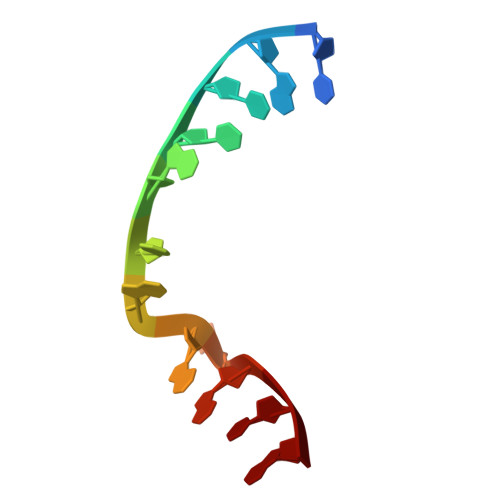Re-pairing DNA: binding of a ruthenium phi complex to a double mismatch.
Prieto Otoya, T.D., McQuaid, K.T., Paterson, N.G., Cardin, D.J., Kellett, A., Cardin, C.J.(2024) Chem Sci 15: 9096-9103
- PubMed: 38903237
- DOI: https://doi.org/10.1039/d4sc01448k
- Primary Citation of Related Structures:
8CMM - PubMed Abstract:
We report a crystal structure at atomic resolution (0.9 Å) of a ruthenium complex bound to a consecutive DNA double mismatch, which results in a TA basepair with flipped out thymine, together with the formation of an adenine bulge. The structure shows a form of metalloinsertion interaction of the Λ-[Ru(phen) 2 phi] 2+ (phi = 9,10-phenanthrenediimine) complex at the bulge site. The metal complex interacts with the DNA via the major groove, where specific interactions between the adenines of the DNA and the phen ligands of the complex are formed. One Δ-[Ru(phen) 2 phi] 2+ complex interacts via the minor groove, which shows sandwiching of its phi ligand between the phi ligands of the other two ruthenium complexes, and no interaction of its phen ligands with DNA. To our knowledge, this binding model represents a new form of metalloinsertion in showing major rather than minor groove insertion.
Organizational Affiliation:
Department of Chemistry, University of Reading Whiteknights Reading, RG6 6AD UK c.j.cardin@reading.ac.uk.


















